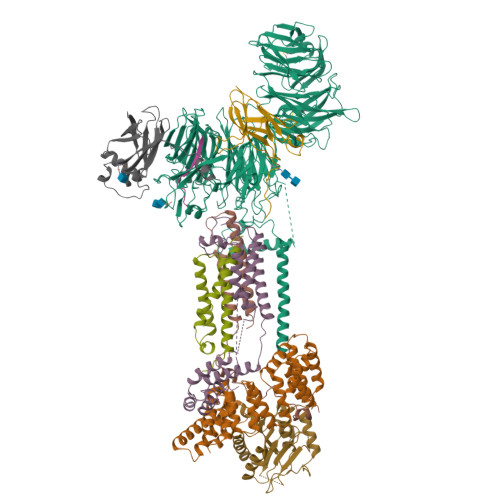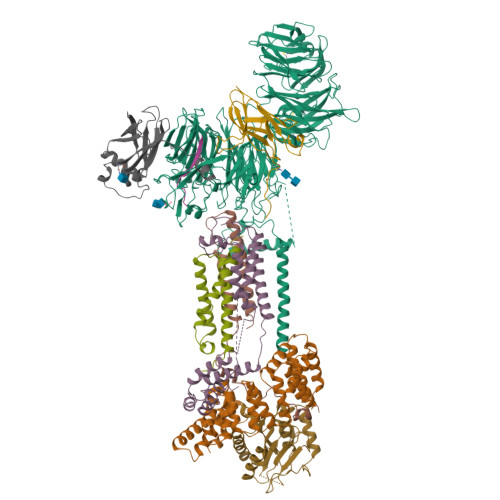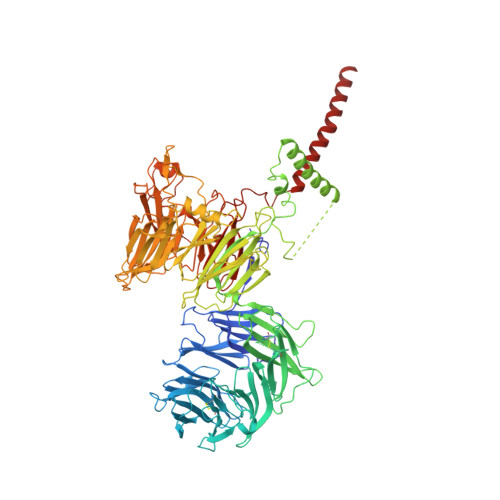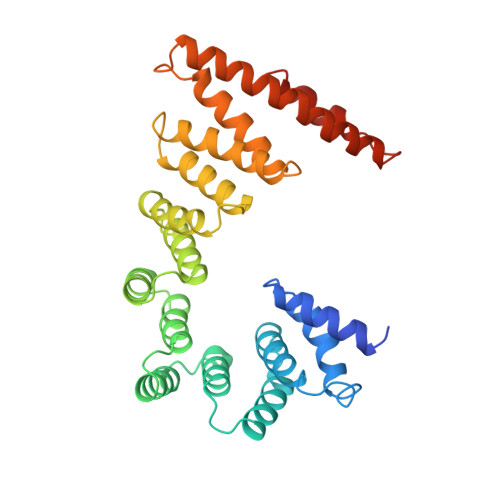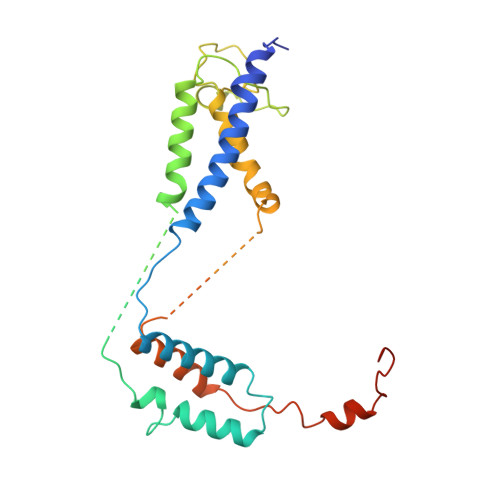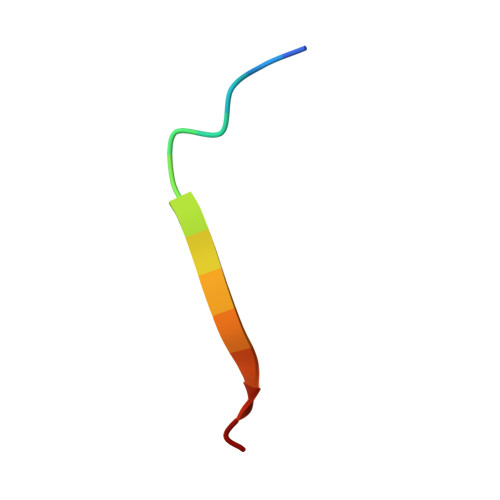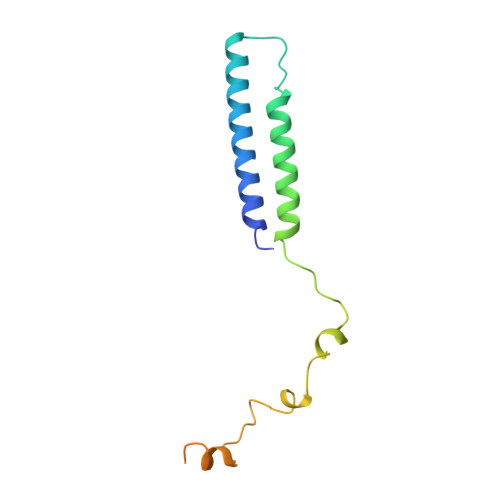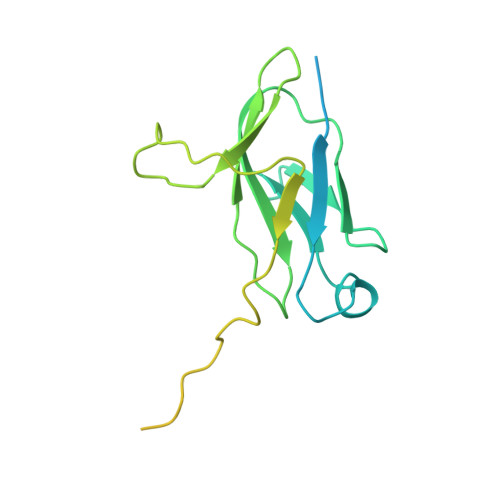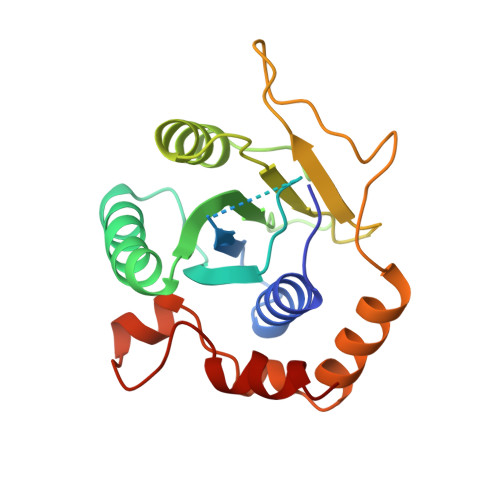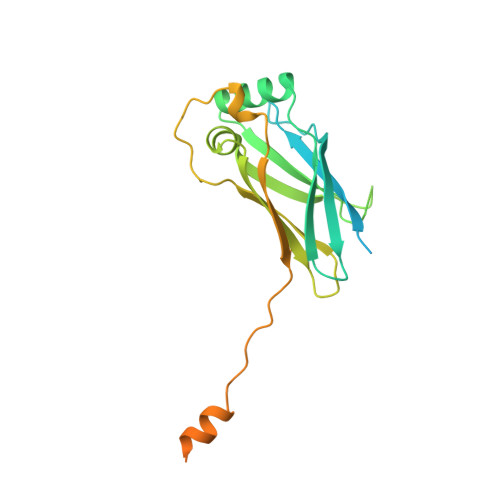Structural basis for membrane insertion by the human ER membrane protein complex.
Pleiner, T., Tomaleri, G.P., Januszyk, K., Inglis, A.J., Hazu, M., Voorhees, R.M.(2020) Science 369: 433-436
- PubMed: 32439656
- DOI: https://doi.org/10.1126/science.abb5008
- Primary Citation of Related Structures:
6WW7 - PubMed Abstract:
A defining step in the biogenesis of a membrane protein is the insertion of its hydrophobic transmembrane helices into the lipid bilayer. The nine-subunit endoplasmic reticulum (ER) membrane protein complex (EMC) is a conserved co- and posttranslational insertase at the ER. We determined the structure of the human EMC in a lipid nanodisc to an overall resolution of 3.4 angstroms by cryo-electron microscopy, permitting building of a nearly complete atomic model. We used structure-guided mutagenesis to demonstrate that substrate insertion requires a methionine-rich cytosolic loop and occurs via an enclosed hydrophilic vestibule within the membrane formed by the subunits EMC3 and EMC6. We propose that the EMC uses local membrane thinning and a positively charged patch to decrease the energetic barrier for insertion into the bilayer.
Organizational Affiliation:
Division of Biology and Biological Engineering, California Institute of Technology, 1200 E. California Ave., Pasadena, CA 91125, USA.








